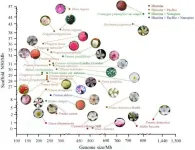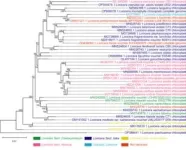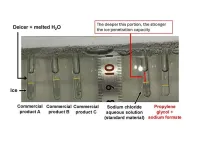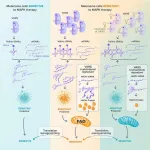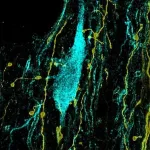(Press-News.org)
A research team has provided a comprehensive overview of the applications of omics technologies in Rosaceae plants. The study highlights significant advancements in genome sequencing, transcriptome, proteomics, and metabolomics, shedding light on the genetic regulatory mechanisms underlying crucial traits such as flower color, fragrance, stress tolerance, and fruit quality. This research is invaluable for molecular breeding and improving economic traits in Rosaceae plants, potentially leading to the rapid cultivation of new varieties and germplasm.
The Rosaceae family, with its diverse species and economic importance, is a focus of breeding efforts aimed at enhancing stress tolerance and ornamental and fruit qualities. Understanding the genetic basis of traits like flower color and fruit quality is essential for both consumer appeal and health benefits. Despite challenges such as climate change-induced stresses, omics technologies, especially genomics, offer promising pathways for uncovering molecular mechanisms and developing resilient varieties.
A review article (DOI: 10.48130/opr-0024-0011) published in Ornamental Plant Research on 06 May 2024 reveals that multi-omics joint analysis has been instrumental in elucidating the complex genetic and biochemical networks regulating important traits in Rosaceae plants.
The study presents a comprehensive exploration of the application of different omics technologies in Rosaceae research. Genome sequencing has been crucial in identifying key genes for important traits. Thanks to continuous advancement of sequencing technology and splicing algorithms, many Rosaceae plants, like persica and Rubus occidentalis, have undergone genome resequencing, aiding comparative genomics and the discovery of high-quality genes for further study. In addition, Genome-wide association studies (GWAS) is an effective research strategy for identifying genes/loci associated with complex traits in Rosaceae plants, such as flower color, fruit quality, and stress resistance. Transcriptome analysis has been instrumental in studying gene expression dynamics, particularly during pivotal developmental stages or in response to stress. For example, analyzing the transcriptome of petals at various developmental stages has provided valuable insights into the biosynthesis of anthocyanins, pivotal for determining flower color. In parallel, proteomics has delved into the diverse functional characteristics of cellular proteins. By identifying proteins associated with stress responses, flower coloration, and fruit quality, proteomic studies have offered fresh perspectives on regulating these traits. Moreover, metabolomics has served as a bridge between genes and observable characteristics by examining changes in metabolites. Through metabolomic studies, researchers have unveiled the roles of different metabolites in stress responses and the quality attributes of Rosaceae fruits and flowers.
This review emphasizes the continuous advancement of omics technologies and their integration for a comprehensive understanding of complex traits in Rosaceae plants. The integration of genomics, GWAS, transcriptomics, proteomics, and metabolomics has enabled the construction of detailed genetic regulatory networks, offering new insights into the growth, development, and stress responses of Rosaceae plants. Looking ahead, the application of emerging technologies such as single-cell RNA sequencing (scRNA-seq) and spatial multi-omics will further enhance our understanding of cellular heterogeneity within plant tissues. These technologies will allow for more precise gene expression and metabolic analysis at the single-cell level, providing a deeper understanding of the molecular mechanisms driving important traits in Rosaceae plants.
According to the study's researcher, Lidan Sun, “We outline the prospects of genomics research in Rosaceae plants, aiming to establish a foundation for comprehending the genetic mechanisms of molecular breeding and significant ornamental traits.”
In summary, the future of Rosaceae plant research looks promising, with ongoing advancements in omics technologies paving the way for innovative breeding programs and the rapid development of new varieties with enhanced traits. This research not only advances our scientific knowledge but also has practical implications for agriculture and horticulture, ultimately contributing to the improvement of economically significant plants.
###
References
DOI
10.48130/opr-0024-0011
Original Source URL
https://doi.org/10.48130/opr-0024-0011
Authors
Wenjuan Lv1 , Dapeng Miao2 , Runtian Miao2 , Dongqing Fan1 ,Juan Meng2 , Xu Liu2 , Tangren Cheng2 , Qixiang Zhang2 and Lidan Sun2*
Affiliations
1 College of Biological Sciences and Technology, Center for Computational Biology, Beijing Forestry University, Beijing 100083, China
2 State Key Laboratory of Effcient Production of Forest Resources, Beijing Key Laboratory of Ornamental Plants Germplasm Innovation and Molecular Breeding, National Engineering Research Center for Floriculture, Beijing Laboratory of Urban and Rural Ecological Environment, School of Landscape Architecture, Beijing Forestry University, Beijing 100083, China
About Ornamental Plant Research
Ornamental Plant Research (e-ISSN 2769-2094) is an open access, online-only journal publishing rigorously peer-reviewed original research papers, review articles and break-through methods of research that advance our understanding of the growth, development and utilization of ornamental plants. Ornamental Plant Research also provides a community forum by publishing editorials and perspectives for expressing opinions on specific issues or new perspectives on existing research.
END
Immunotherapy is one of the pillars in the fight against cancer and aims to enable the body's own immune system to fight a tumor. A recent study now shows that removing certain enzymes that regulate epigenetic processes from the so-called dentritic cells of the immune system influences their development and thus improves anti-tumor immunity. This finding could lead to new therapeutic strategies in immunotherapy. The study by Cristiano De Sá Fernandes from Maria Sibilia's research group at the Center for Cancer Research and the Comprehensive Cancer Center of MedUni Vienna and Vienna General Hospital was recently published in Cell Reports.
Cancer cells are the body's ...
China’s economy has shifted from a stage of high growth to a stage of high-quality development, and the establishment of a dual-carbon target requires profound changes in the industrial structure and energy systems, as well as finding the right direction and pathway for industrial adjustment. While the potential for technological emission reduction continues to be released, the main factor affecting China’s carbon emissions is the speed and intensity of economic transformation and industrial restructuring.
A research team of Dr. GU Alun from Tsinghua University in Beijing, China, recently analyzed the correlations ...
Fukuoka, Japan—In a paper published in Geophysical Research Letters, researchers have discovered that the turbulence in the thermosphere exhibits the same physical laws as the wind in the lower atmosphere. Furthermore, wind in the thermosphere predominantly rotates in a cyclonic direction, in that it rotates counterclockwise in the Northern Hemisphere and clockwise in the Southern Hemisphere.
The findings reveal a new unified principle for the Earth’s varied environmental systems and can potentially improve future forecasting of both earth and space weather.
One time or another we’ve tuned in to see the latest weather forecast, and while ...
Neurons communicate electrically so to understand how they produce brain functions such as memory, neuroscientists must track how their voltage changes—sometimes subtly—on the timescale of milliseconds. In a new paper in Nature Communications, MIT researchers describe a novel image sensor with the capability to substantially increase that ability.
The invention led by Jie Zhang, a postdoctoral scholar in The Picower Institute for Learning and Memory lab of Sherman Fairchild Professor Matt ...
The dangers of frozen roads, airplane engines, and runways are well known, but the use of commercial products often means short-term safety over long-term environmental degradation. Seeking a better product, Osaka Metropolitan University researchers have developed a deicing mixture offering higher performance than deicers on the market while also having less impact on the environment.
The team, made up of graduate student Kai Ito, Assistant Professor Arisa Fukatsu, Associate Professor Kenji Okada, and Professor Masahide Takahashi of the Graduate School of Engineering, used machine learning to analyze ice melting mechanisms of aqueous solutions of 21 salts and 16 organic ...
Cells are signalled to have nutrients in excess, and this leads to malfunction and inflammation in organs such as the pancreas, the liver and the kidneys.
The finding, by CNIO researchers, are published in Nature Aging. It suggests that an intervention on the inflammation alone can relieve symptoms and increase survival.
The research has been conducted on animal models, but comparing their molecular processes with blood samples from people in their seventies indicates that they can be extrapolated to human aging.
The reality of a population who is ageing at an accelerated rate makes it a priority to understand what happens in the body over time, ...
An international research team led by scientists from the University of Liège has discovered an interesting new therapeutic target for the treatment of melanoma resistant to targeted therapies. Inhibition of the VARS enzyme could prevent this therapeutic resistance by resensitising tumours resistant to these targeted therapies.
Melanoma is one of the most serious and aggressive forms of skin cancer. When diagnosed early, melanoma is surgically removed. However, once metastases (i.e. secondary distant tumours) have developed, ...
‘I’m not gonna do this again’, we often say when faced with negative feedback, adverse effects, or disappointing outcomes. Thus, we attempt to learn from such negative experiences. This principle is also a cornerstone of our education system: failing an exam ought to encourage students to do better next time.
How does the brain achieve this type of learning? Positive and negative reinforcement appear as two sides of the same coin in parts of the brain’s valuation system. Notably, some neurons that release the neuromodulator ‘dopamine’ represent outcomes better vs. worse ...
In pausing to think before making an important decision, we may imagine the potential outcomes of different choices we could make. While this “mental simulation” is central to how we plan and make decisions in everyday life, how the brain works to accomplish this is not well understood.
An international team of scientists has now uncovered neural mechanisms used in planning. Its results, published in the journal Nature Neuroscience, suggest that an interplay between the brain’s prefrontal cortex and hippocampus allows us to imagine future outcomes in order to guide our decisions.
“The prefrontal cortex acts as a ‘simulator,’ ...
A team of Vanderbilt researchers has developed a wirelessly activated device that mimics the wavelike muscular function in the esophagus and small intestine responsible for transporting food and viscous fluids for digestion.
The soft-robotic prototype, which is driven by strong magnets controlled by a wearable external actuator, can aid patients suffering from blockages caused by tumors or those requiring stents. For example, traditional esophageal stents are metal tubes used in patients with esophageal cancer, mostly in an aging population. These patients risk food being blocked from entering the stomach, potentially ...
